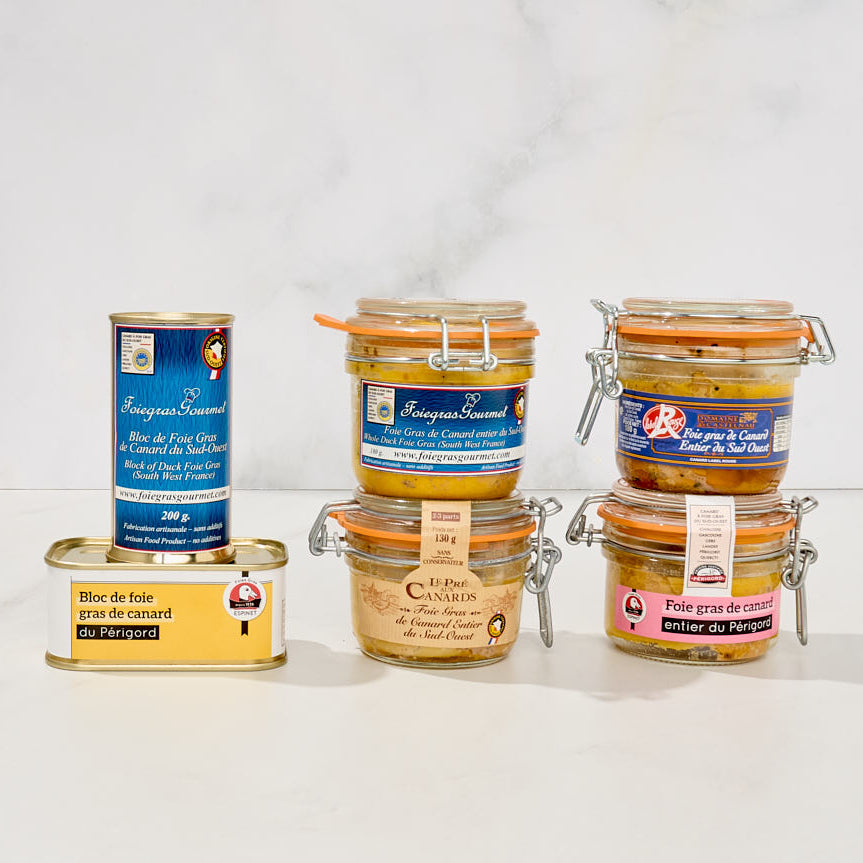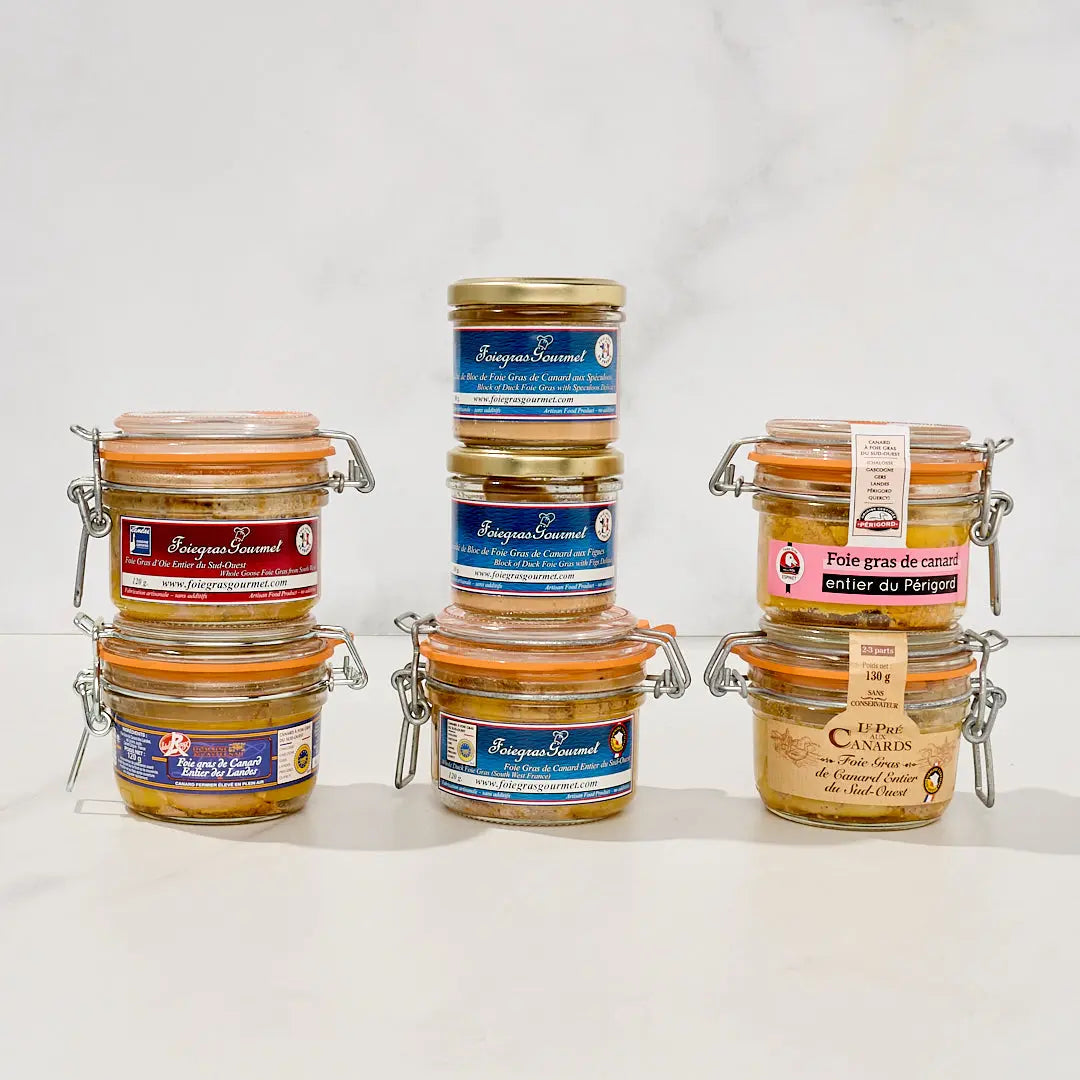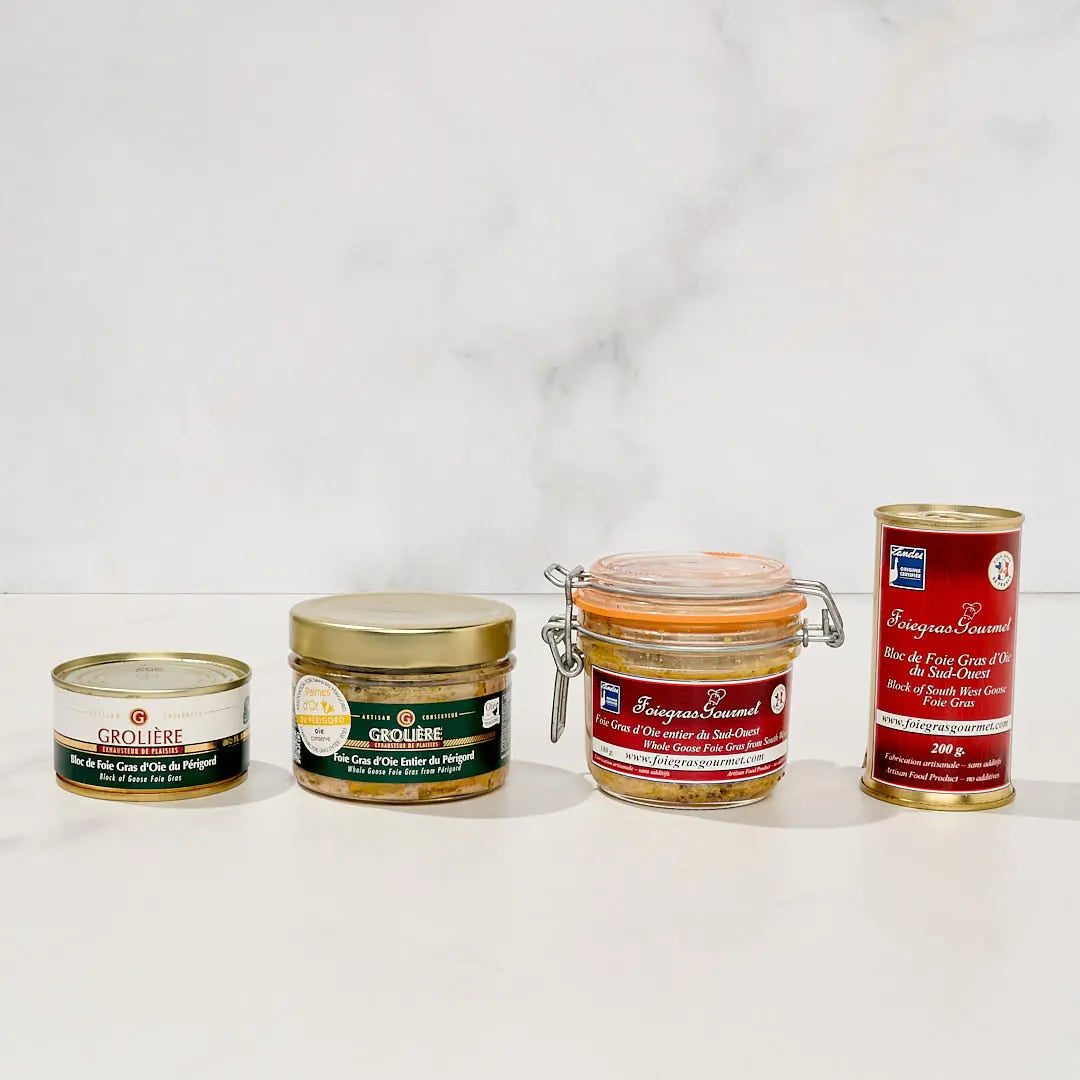What is duck foie gras?
Described by the renowned food encyclopedia Larousse Gastronomique as “one of the jewels in the crown of French gastronomy”, foie gras is a most delicious delicacy made from the liver of a specially fattened duck or goose.
In recent years, duck foie gras has become the preferred foie gras due to both its more defined flavor and also its affordability and it is the unique flavor of duck foie gras that delights gourmets all over the world. There is not a French gastronomic restaurant whose menu does not feature foie gras and each chef competes to prepare their own signature dish that their customers will not forget.

It is difficult to explain in words the flavor of foie gras: so particular, unique. Its texture is silky smooth, some describe its taste as beefy and it simply melts in your mouth. Duck foie gras is versatile and its unique and sensational flavor lends itself as an ingredient to many different dishes. Different recipes and styles of cooking will, of course, result in different flavors – duck foie gras is a dish that has to be sampled and which you will most certainly enjoy!
As with wines, cheeses and other rich products, the flavor of duck foie gras can vary according to its quality or the way in which it is prepared. For example, a Camembert made from pasteurized milk and sold in a hypermarket will never be as good as a creamy cheese made by an artisan Camambert producer using raw milk from cows grazing the rich green pastures of Normandy!
The quality of foie gras
Unfortunately, many foie gras are mass produced, often resulting in a standardized taste which while often acceptable can be a little bland and lack the subtle flavors that make a good foie gras really exciting.
Foie gras made by family businesses or producers' cooperatives will often be better because these businesses understand that it is the quality of their foie gras which ensures they are able to compete against the large industrial groups with their huge commercial and marketing resources. These smaller enterprises strive to maintain traditional production processes, considering updates to their approaches only where this will improve the quality of their foie gras.
The taste of foie gras will differ according to the type of foie gras
Fresh duck foie gras has a stronger taste. Cooked in a frying pan, the fresh liver will have a pronounced taste and a particular texture. It is served warm, accompanied by a chutney of figs or onions.
At Christmas, it is traditional to prepare a terrine using a fresh foie gras with truffles. This gentle way of cooking is becoming ever more popular and results in a powerful taste that will please some but may surprise others!
The shorter the time and the lower the temperature at which the foie gras is cooked, the more pronounced its flavor. Some people will love this very pronounced, rustic taste, while others may prefer a more subtle flavor.
Whether or not it is served in a terrine, foie gras has a well-earned place at the heart of French festive preparations!
Foie gras pâtés also exist and can be tasty as an everyday food although since they incorporate pork fat are less flavoursome and nutritious than foie gras itself which contains only duck or goose fat.
Canned foie gras
This is a very convenient way to discover foie gras, because of the balanced taste. Of course, the flavor will vary according to the quality of the product and the method of production. Always choose foie gras which does not contain preservatives or additives and whose origin is recognized (IGP, Label Rouge).

Whole foie gras will have a more robust flavor than blocks of foie gras which are a milder taste. A whole duck foie gras will accompany a salad perfectly, while a block of duck foie gras sliced and served on toasted bread as an aperitif will delight your guests!
You don't have to be a great chef to offer your guests a delicious and original appetizer. It only takes a few minutes to open a can or jar of foie gras and serve it on toast.
The French consumed almost 18,500 tons of foie gras in 2020 (96% duck and 4% goose). The bulk of this (90%) being produced in France, the rest imported from countries such as Hungary or Bulgaria.
Some people consider the consumption of foie gras to be unethical. They consider gavage, first practiced by the Ancient Egyptians, to be at best questionable, at worst cruel. Today, laws governing gavage are strict and the prevention of animal cruelty paramount. Animals must be treated with respect with gavage carried out in collective cages using only small pipes and tubes whose sizes are small enough to ensure that neither the organs nor throats of the birds are damaged. These laws also ensure that ducks and geese are slaughtered humanely.
While some countries have decided to ban the production of foie gras (but, interestingly, not its consumption, it is perfectly legal to purchase and consume foie gras in all countries other than some very rare exceptions such as the city of New York from 2022).
Many tourists who visit farms in southwest France are able to see that the birds there are raised in large outdoor spaces. Visits to the gavage workshops rarely shock visitors who are then able to formulate their own opinion, and most of these visitors will buy the foie gras.












Ask questions on the topic of foie gras